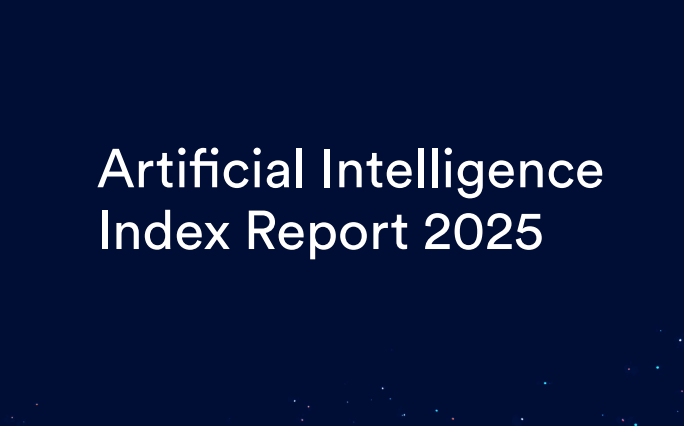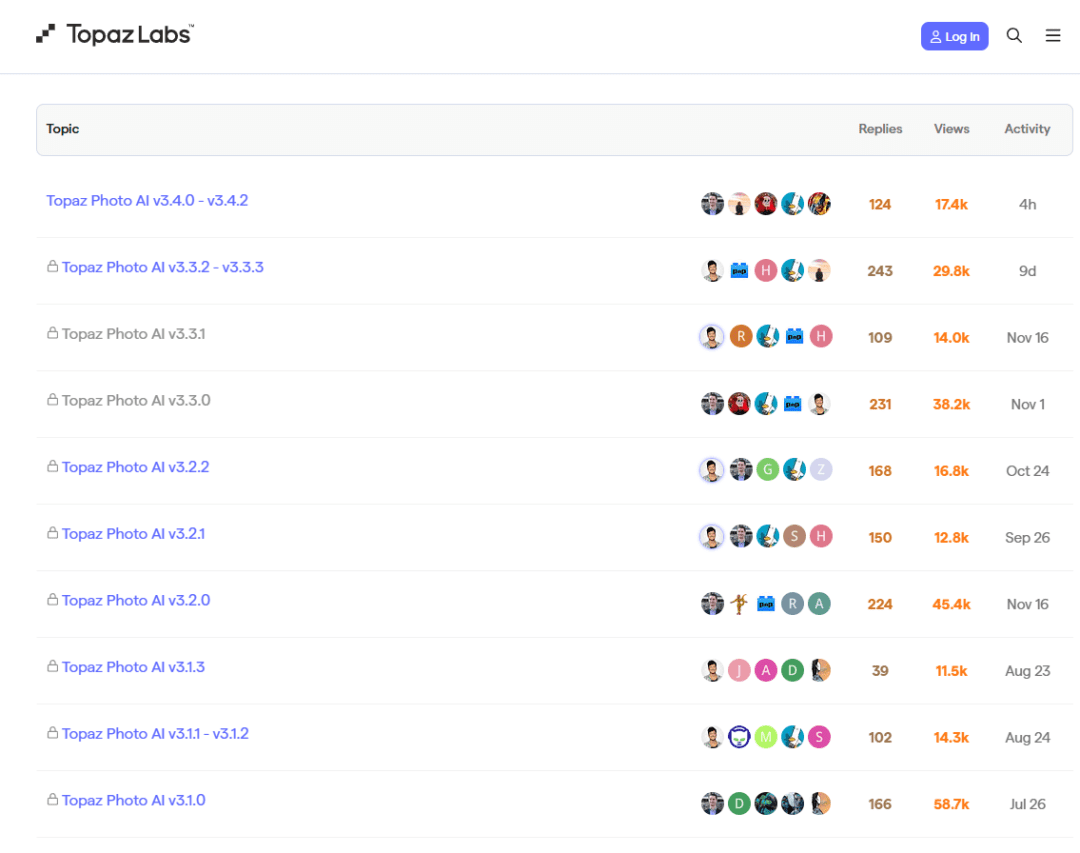Stanford 2025 AI report is out: full PDF download
The Human-Centered Artificial Intelligence Institute (HAI) at Stanford University has released the eighth edition of theArtificial Intelligence Index Report (2025)". This report paints a picture of the significant acceleration of AI in research and development, applications, and investment over the past year, while also pointing out the challenges that remain in terms of responsible AI practices, public trust, and the uneven global distribution of technological development.

AI performance is surging and the technology landscape is changing fast
The 2025 report shows that AI's performance in a variety of difficult benchmarks continues to improve rapidly. Newly introduced high-stakes tests like MMMU, GPQA and SWE-bench have AI systems nailing them much faster than ever before. The report also mentions that AI models are making huge strides in generating high-quality video (like OpenAI's SORA and Google's Veo 2), and can even outperform human programmers on specific programming tasks in a limited time frame.
On the technology side, things are changing fast. The performance gap between the top closed-source and open-source models has narrowed considerably, from 8.01 TP3T to 1.71 TP3T on the platform Chatbot Arena over the past year.Similarly, the performance difference between the top 10 models on the leaderboards has narrowed from 11.91 to 5.41 TP3T, indicating that high-quality models are are becoming more and more popular. Smaller models such as Microsoft's Phi-3-mini also performed well, reaching levels that would previously have required models more than 100 times larger, showing the increased efficiency of the algorithm.
Efficiency gains are also evident. the cost of use (reasoning cost) of AI models has dropped dramatically, for example, the cost of use of a model that achieves the GPT-3.5 level on the MMLU benchmark has decreased by more than 280 times since the end of 2022. Hardware costs have declined by about 301 TP3T per year, and energy efficiency has improved by about 401 TP3T per year.However, the report also cautions that complex logical reasoning and planning capabilities remain the main challenges facing AI systems today.
Investment boom and deepening economic integration
Global corporate investment in AI reached a record $252.3 billion in 2024. Private investment surged by $44.5%, the first year-over-year increase since 2021. Generative AI was particularly absorbing, garnering $33.9 billion in private investment, accounting for more than 201 TP3T of total AI investment.
The U.S. lead in private investment in AI has widened even further, with $109.1 billion invested, almost 12 times as much as China and 24 times as much as the UK. In the field of generative AI, the U.S. investment is even more than that of China, the EU and the UK combined.
Enterprise adoption of AI has also jumped dramatically. McKinsey survey data shows that 78% of enterprises are using AI in at least one part of their business in 2024, much higher than the 55% in 2023.The use of generative AI has more than doubled to 71%.While enterprises are starting to see the financial benefits of AI, most are still in the early stages (cost savings or revenue increases are generally below 101 TP3T). Research continues to confirm that AI increases productivity and in many cases helps to close the gap between high and low skilled employees.
Challenges Remain as Progress on Responsible AI is Uneven
Despite rapid technological advances, the Responsible AI (RAI) ecosystem has grown unevenly. negative AI-related incidents (according to the AI Incident Database) increase dramatically by 56.41 TP3T in 2024, reaching an all-time high of 233 incidents. However, there is still a lack of harmonization of responsible AI assessment standards for large models, although new benchmarks like HELM Safety and AIR-Bench are emerging.
According to the Base Model Transparency Index, transparency in model development has improved (average score from 371 TP3T in October 2023 to 581 TP3T in May 2024), but there is still a lot of room for improvement. While organizations are aware of RAI risks like data inaccuracies and cybersecurity, the report notes that there is still a large gap between awareness of the risks and the adoption of actual mitigation measures.
Public trust is also being challenged. Globally, confidence in AI companies to protect personal data has declined, while fewer people than last year believe AI systems are free of bias or discrimination. The study also found that even models that are explicitly designed to be unbiased can still exhibit potential social bias. In addition, "data-sharing" resources are shrinking, as more and more websites are restricting data crawling for AI training, which could affect the plurality and capabilities of future models.
Geopolitics, Governance and Global Sentiment
On the geopolitical front, the United States remains the country producing the most top AI models in 2024 (40), well ahead of China (15) and Europe (3). However, the report highlights that the performance gap between Chinese models on major benchmarks has been closing rapidly, and is almost equal to US models by the end of 2024. China leads in the total number of AI publications and patents, while US organizations contribute the most highly cited research.
Governments around the world are stepping up their AI game, not only with massive investment programs (e.g., Canada, China, France, India, Saudi Arabia), but also with increasing regulatory activity. The report shows a 21.31 TP3T increase in the number of references to AI in the legislative agendas of 75 countries around the world, while the number of federal AI-related regulations in the U.S. more than doubles in 2024 compared to 2023. U.S. states are also very active, especially in regulating deepfake (deepfake) technology. International cooperation is also increasing, with organizations such as the OECD, the EU, the UN, and the AU publishing frameworks for responsible AI, and an international network of AI security institutes has been established.
In terms of public sentiment, there is a trend of cautious optimism globally, especially in countries that were previously more skeptical, such as Germany and France. However, regional differences remain significant, with the majority of people in countries such as China and Indonesia being very bullish on AI, while optimism is much lower among the public in countries such as Canada, the United States, and the Netherlands.
The Growing Role of AI in Science and Everyday Life
The report highlights the growing integration of AI into our daily lives and the transformative impact it is having on the scientific landscape.In 2023, the US Food and Drug Administration (FDA) approved 223 AI-enabled medical devices, a huge increase from just six in 2015. Self-driving cars are also moving out of the pilot phase, with Waymo operating widely in several US cities and Baidu's Apollo Go expanding rapidly in China.
The profound impact of AI on science has been recognized by the Nobel Prizes: the Physics and Chemistry prizes were awarded for achievements related to deep learning and protein folding (AlphaFold), respectively, and the Turing Prize was awarded to the founders of the field of reinforcement learning.AI continues to drive scientific discovery, with advances in protein sequencing models (e.g., ESM3, AlphaFold 3), and the basic models beginning to be applied to the medical field. AI continues to drive scientific discovery, protein sequencing models (e.g., ESM3, AlphaFold 3) continue to advance, and basic models are beginning to be applied in medicine.
In sum, the Stanford 2025 AI Index report paints a picture of a fast-growing AI field: one that delivers tangible benefits and attracts unprecedented investment, but also faces deep ethical questions, governance challenges, and an urgent need to build broader public trust and ensure equitable development.
© Copyright notes
Article copyright AI Sharing Circle All, please do not reproduce without permission.
Related posts

No comments...




